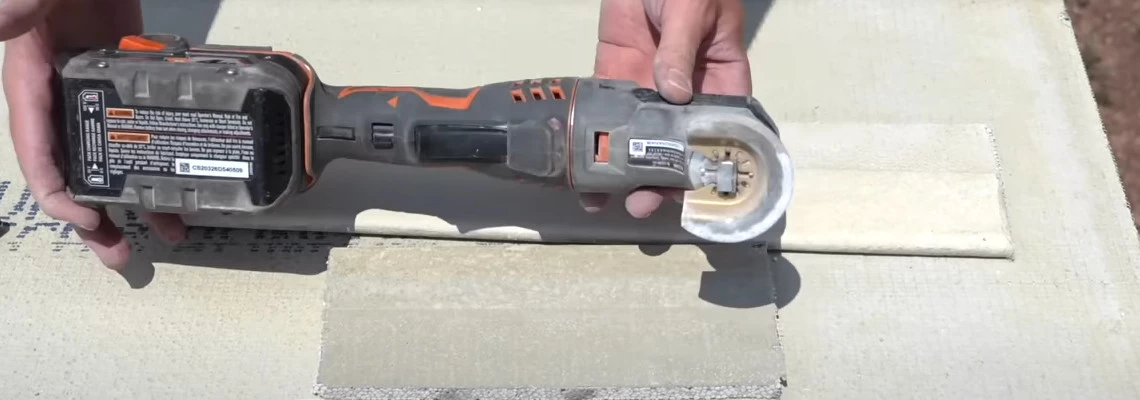
** Reading time: 6 minutes**
HOW TO CUT CEMENT BOARD*
Cement board is a go-to product, it has been over the years to use as a substrate or underlayment. It gives a good base for the tile to be able to adhere. Cement Board is easy to install, making it a great option for contractors and DIYers alike. However, cement boards embedded with a glass-fibre mesh is a very hard material and can be difficult to cut. The one drawback to concrete backer boards is that they're quite heavy too and thus can be problematic to cut. To produce a professional finish, it’s essential that you make clean cuts in the cement board. Lack of knowledge on how to cut neatly cement boards stops many people using it in the first place. If you are reading this, you are probably wondering how to cut Hardie backer board to size or straight. Or perhaps you are looking to just cut in situ cement board around sockets or at an angle. In this article we will explain how you can cut cement boards using the 7 available methods. Each one of those is going to be slightly different and they’re going to be varying levels of difficulty.
 TABLE OF CONTENTS
TABLE OF CONTENTS
HOW TO CUT CEMENT BOARD
CUTTING CEMENT BOARD WITH UTILITY KNIFE
CUTTING CEMENT BOARD WITH HAND SAW
CUTTING CEMENT BOARD WITH ANGLE GRINDER
CUTTING CEMENT BOARD WITH CIRCULAR SAW
CUTTING CEMENT BOARD WITH JIGSAW
CUTTING CEMENT BOARD WITH OSCILLATING TOOL
CUTTING CEMENT BOARD WITH SNAPPER SHEAR PRO
WHAT IS THE EASIEST WAY TO CUT CEMENT BOARD?
BEST WAY TO CUT HOLES IN CEMENT BOARDS
HOW TO CUT CEMENT BOARD WITHOUT DUST?
BIBLIOGRAPHY
Cement backer board can be cut manually with a utility knife or handsaw and with all sources of power tools equipped with a masonry cutting disc such as circular saw, angle grinder or jigsaw. You have several methods for cutting cement boards at your disposal.
1. CUTTING CEMENT BOARD WITH UTILITY KNIFE
First, we are going to show you how to cut cement boards with a utility knife.
The absolutely smartest and most efficient way to cut cement boards is by using scoring and snapping techniques. It means marking, then scoring a line on the face side of the board with a straight edge and cutting with a Stanley knife (utility knife). Next step would be lifting the cement board and snapping the board along the score line. As a final step you run the knife down the other side of the board, cutting the back of the cement board. The big advantage of this technique is that no electricity is needed.
Some people find cutting the cement board with a utility knife hard so it is recommended if you have a few cuts only and you don’t want to spend any extra money on expensive tools.
USE THE STRAIGHTEDGE
Lay your cement board flat, and draw a line with a carpenter's pencil where you intend to cut. Lay the straightedge on the cement board, along the intended cut line. Make sure the line is straight and visible.
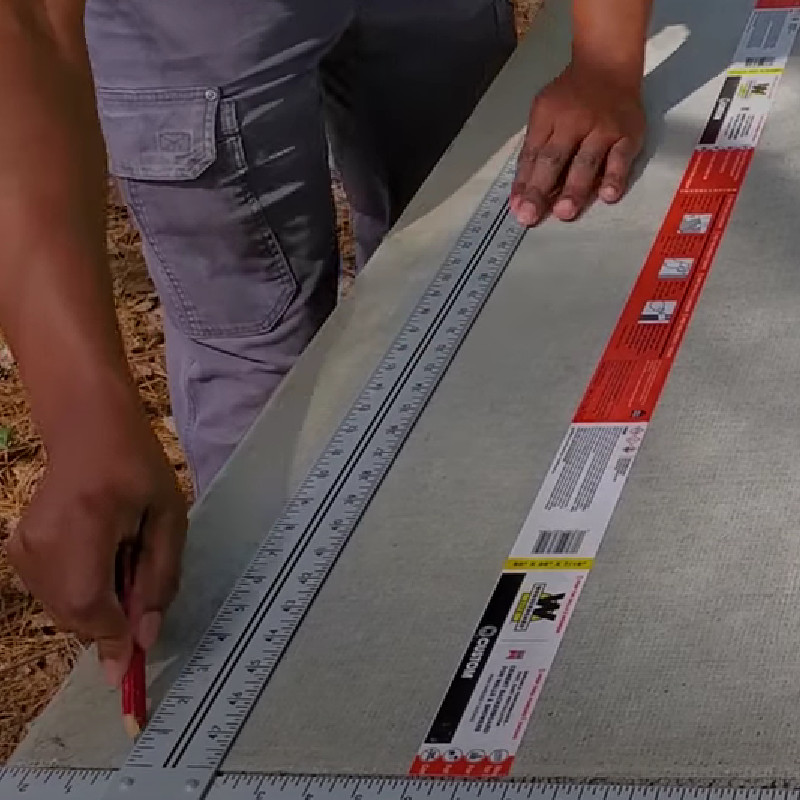
SCORE THE BOARD
Create a score line, not a full cut. Apply pressure and guide your utility knife as you drag it across the line you marked to score the cement board. Repeat the cuts 2 or 3 times.
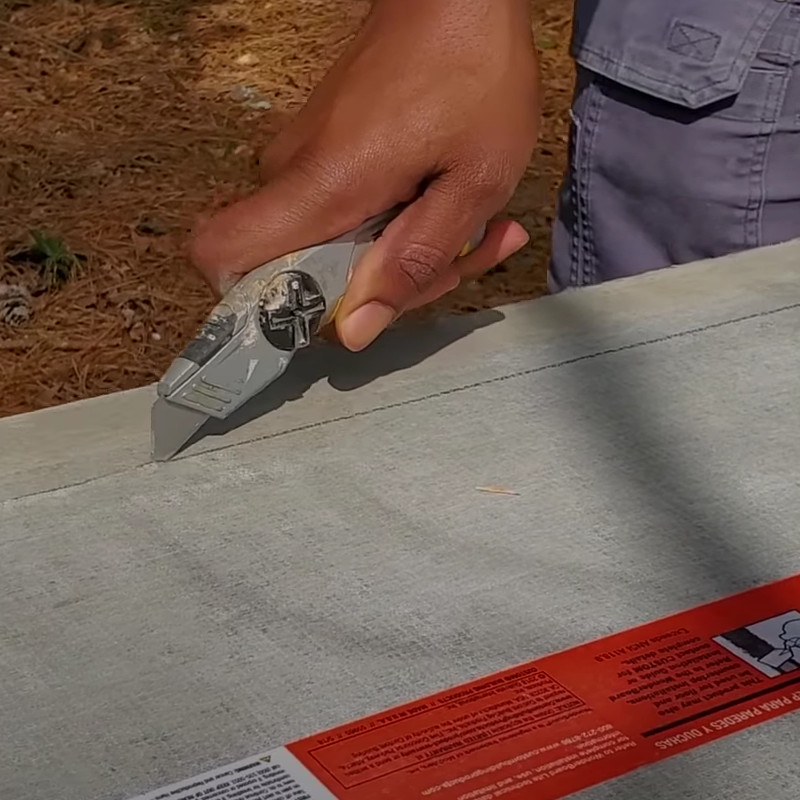
TIP
The deeper you can make your cuts, the easier it will be to snap the board.
TURN THE CEMENT BOARD OVER
Turn the cement board over - former top is now facing down.
CUT THE BOARD ONCE AGAIN
Fold the smaller of the two sides up at about 70 degrees. Cut the inner mesh with your utility knife. Make sure it doesn’t drop on the ground as it may chip or crack.

This method is the hardest but in turn the cleanest and works best for straight cuts. Why? Well, there is no direct interference in the centre of the sheet.
PROS
- very clean cut
- the line is straight
- speed
- no electricity involved
CONS
- the cement board needs to be 12mm in thickness in order to be scored and snapped. Any thicker and you’ll have to use a saw to cut it.
- you can physically exert yourself a lot more
- need very sharp blade
- can't be used for partial cuts
- constant pressure needed as you score the cement board to be able to snap it cleanly
- no curves or holes
TIME OF CUTTING: aprox.30-40 sec
2. CUTTING CEMENT BOARD WITH HAND SAW
Cutting cement boards with electric tools is one way of doing it, but what about if you don't have any of that? Well, cement boards can simply be sawn using an ordinary timber saw. It is a must have tool to any tradesman or DIY enthusiast. Handsaw is often used for either plastic or wood. They cut using both the push and pull stroke. Selecting the wrong blade for cement boards may result in a raw finish, while selecting the right blade will result in a finer finish.
Handsaws with fewer teeth are not recommended to cut cement boards as they are best for fast, coarse cuts only. While cutting a Hardiebacker board with a hand saw may sound like a simple operation, however, it is the slowest method.
TIP
Measure twice, cut once. The finer the teeth, the better and a cleaner edge is obtained with a fine toothed saw.
PROS
- great for complex shapes
- much more control
CONS
- slow operation
TIME OF CUTTING:aprox.4-5min
3. CUTTING CEMENT BOARD WITH ANGLE GRINDER
Next, we are going to show how to cut cement boards with the angle grinder. In order to work with cement boards this tool needs to be equipped with a masonry disk (blade). Good thing about this technique is that it cuts really fast but it makes a lot of dust and the dust is dangerous to breathe because it has silica in it. Prolonged breathing of silica dust may cause lung disease. So for this reason you always need to wear goggles and a mask. The quality of the cut is really good.

PROS
- no physical effort
- curves can be cut
CONS
- a great amount of dust is produced
- special disk is required
TIME OF CUTTING: aprox.3-4min
4. CUTTING CEMENT BOARD WITH CIRCULAR SAW
The cement board can be also cut easily using a circular-cut saw, a guide rail and a dust extractor. If you have one of those tools laying around, you can definitely use them but remember to do it outside because they make a lot of dust.
This method involves setting the circular saw onto the guide rail, setting circular saw to a depth of 15mm on the cutting depth scale then cutting sheet along the entire length of the rail at maximum speed level. Always make sure you wear ear protection and eye protection when cutting cement boards because circular saw creates tons of dust and a part of that is due to the fact that the blade spins. That motion alone creates ideal scenario to kind of whip up dust and throw it everywhere
MARK A STRAIGHT LINE
This line will be your guide as you saw the board with the blade of the circular saw.
TURN OVER CEMENT BOARD
To avoid chipping you should be cutting along the backside of the board. The blade of the circular saw cuts from the lower side and into the board. Make sure you place the backside of the board facing up so the front will have a smoother edge. Set the depth of the blade. For the best quality cuts it is crucial to make sure the blade does not protrude more than 1-2mm out of the base of application.
SET THE SAW TO FULL SPEED BEFORE CUTTING
The blade of the circular saw must be rotating at full speed before it makes contact with the board. Slowly push the saw through the cement board. Always listen for the sound of the blade moving through the sheet. If it sounds like it is catching and isn’t moving through the material, pause and slow down your advance.
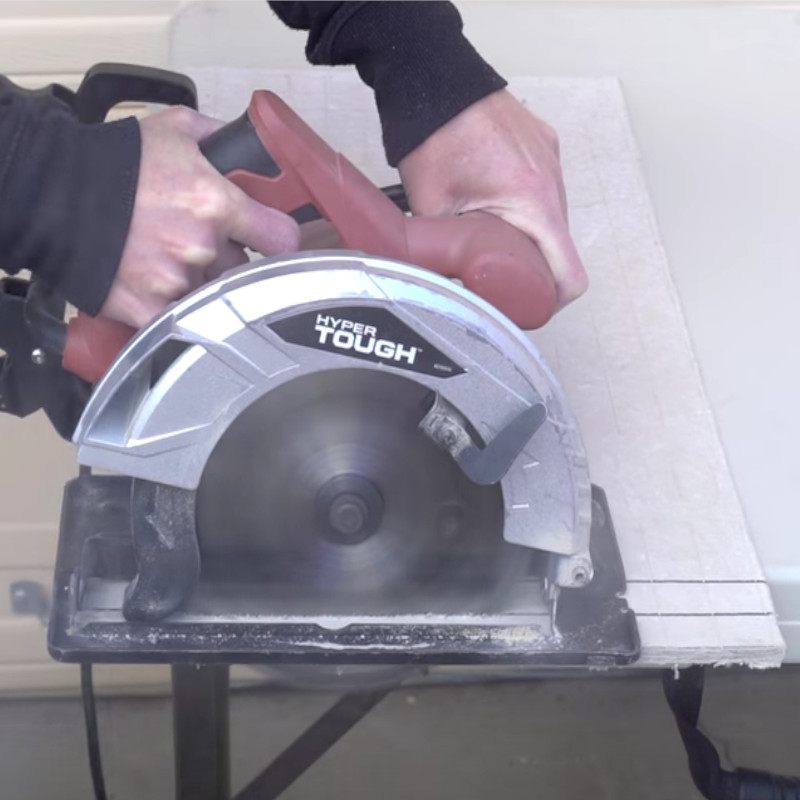
PROS
- clean, accurate cuts, straight cut.
CONS
- may cause lung disease
- concrete dust is hazardous
- dust-collection device required
- You can not cut inside
TIME OF CUTTING:aprox.2-2.5min
5. CUTTING CEMENT BOARD WITH JIGSAW
Now, we are going to show you how to use a jigsaw with a coarse blade to cut cement boards. Jigsaw is a mechanical method for cutting cement. It does create a little bit of dust. In fact, jigsaw works slightly better than an angle grinder or the circular saw because it is easier to cut patterns and it doesn’t make as much dust. You will see a clean straight cut but it is still pretty dusty. When you use a jigsaw, you are able to use one tool to complete many different pieces of work.
MARK THE CEMENT BOARD
Lay the board face-up so you can mark the line.
ADJUST JIGSAW BLADE SPEED
Fit the jigsaw with a metal-cutting blade. A jigsaw blade moves slower than a circular saw, so it must be brought to full speed before you start using it to cut the cement board. All you have to do now is run the blade at high speed. Push the blade gently into the material until it breaks through.
ALWAYS USE A GUIDE
Each time you cut a cement board with a jigsaw make sure you use a guide to follow. Keep the jigsaw from jumping off of the cement board. Slow down if you hear the blade catching the cement board.
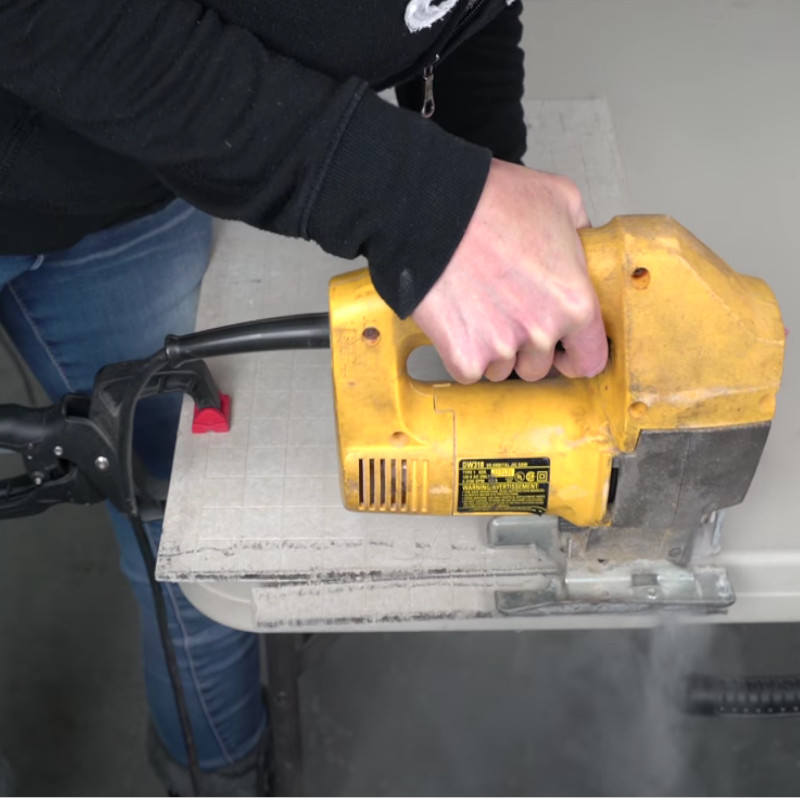
PROS
- more customizable cut
- lot safer to operate than circular saw
- lot less manual labour from a effort standpoint
- a jigsaw can cut a variety of holes in drywall including standard, rectangular, and plunge cuts, precise holes for your light switches or power outlets.
- you can make curved cuts with a jigsaw very easily and cleanly
CONS
- results in imprecise cuts,
- creates an extreme amount of dust
- work a lot slower
TIME OF CUTTING:aprox.4min
6. CUTTING CEMENT BOARD WITH OSCILLATING TOOL
One of the easiest ways to cut cement board is an oscillating tool with a diamond blade on it. This is kind of the same idea but instead of using the straight edge as a guide you are going to mark it just like you did with the utility knife method and then cut right down it.

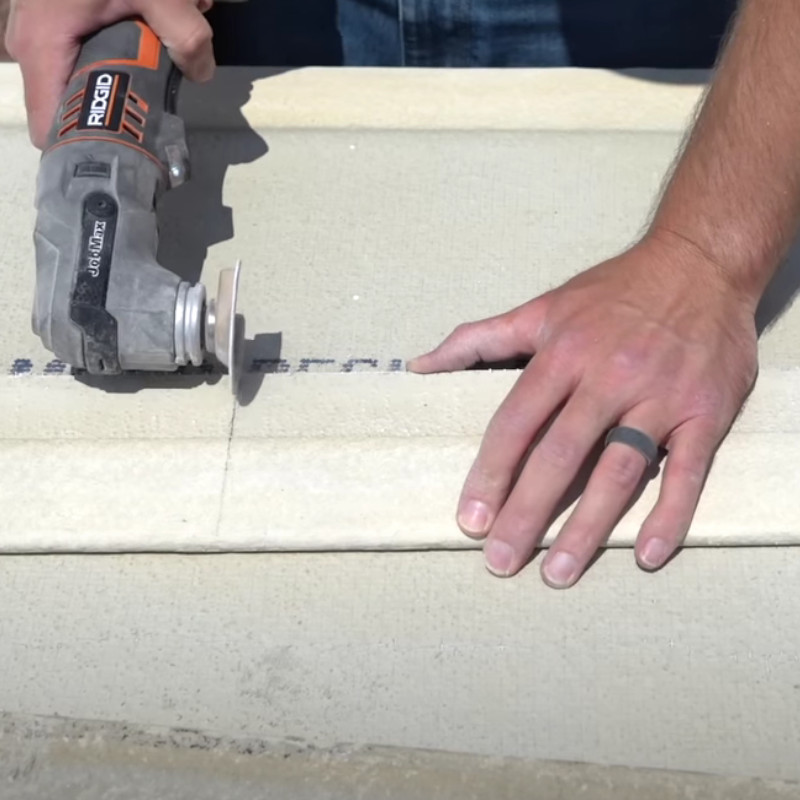
As you can see it cuts really easily. Next, all you have to do is to snap the board just like you do with drywall and cut the back of the boards.
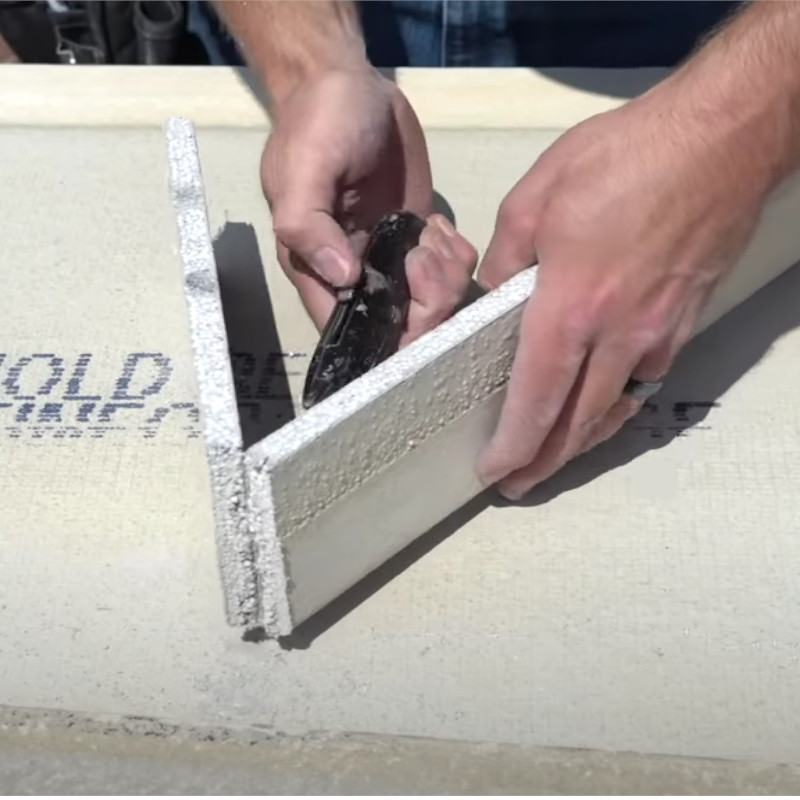
PROS
- you can cut cement boards indoors without throwing up to much dust
CONS
- may be expensive to buy
TIME OF CUTTING: aprox.2min
7. CUTTING CEMENT BOARD WITH SNAPPER SHEAR PRO
We saved the best for last. It is called a snapper shear pro and it is by far the best tool you can ever use to cut cement boards such as Hardiebacker. It makes very little dust and it fits any drill. It is quite expensive to buy but if you are going to cut a lot of Hardibacker boards it’s definitely worth it.
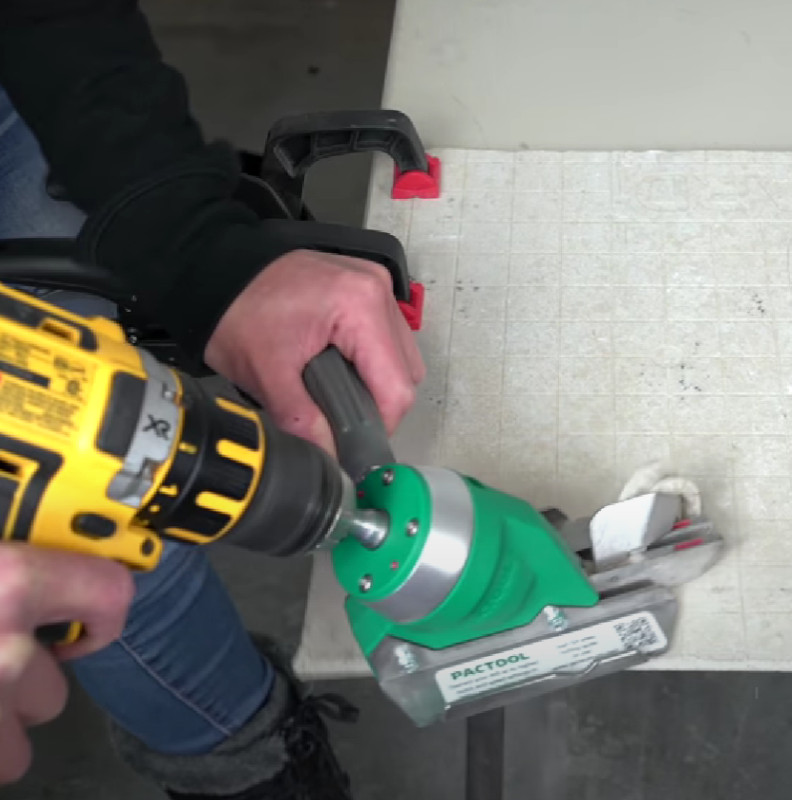
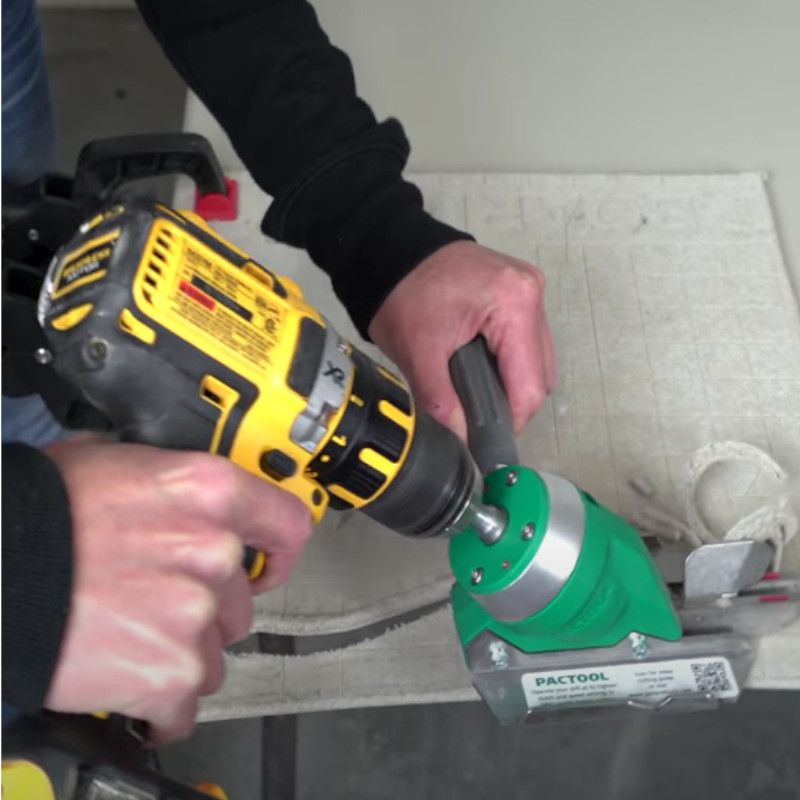
PROS
- very little dust
- easy to cut patterns with
CONS
- expensive tool
- very specialised one-dimensional tool
- tool can only be used to cut cement board
- tool doesn’t have very many other uses
TIME OF CUTTING: aprox.2min
WHAT IS THE EASIEST WAY TO CUT CEMENT BOARD?
Lot of people cut cement boards with a utility knife. This is the official easiest way to cut cement boards so far as it creates no dust, requires no power and the cuts are accurate and clean. Since each cut takes no more than 30-40 sec it is also known as the fastest method of all. Despite the fact that it can tire the worker, it is the most comfortable for a man on site. Moreover, it is definitely the cheapest option but it’s not nearly as easy as cutting a cement board with a circular saw.
BEST WAY TO CUT HOLES IN CEMENT BOARDS
One of the most frustrating and time-consuming parts of fixing cement boards is cutting holes such as shower valve holes. To cut holes in cement board you can either use a cutting kit with varieties of sizes or pad saw (drywall saw). If you don't want to buy a drywall saw, Stanley makes a blade the same as a drywall saw 1275B that fits a Stanley knife. They are great for carving pumpkins too:)
SQUARE HOLES
Cutting square holes in cement board is a lot easier than you might imagine. There isn't a better alternative than cutting square holes in such a board with a pad saw or oscillating tool. All it needs is to transfer the measurements, drill starting holes with the drill bit and cut board according to lines you marked earlier. You can use either a jigsaw, handsaw or oscillating tool to make the cuts along the marked lines.
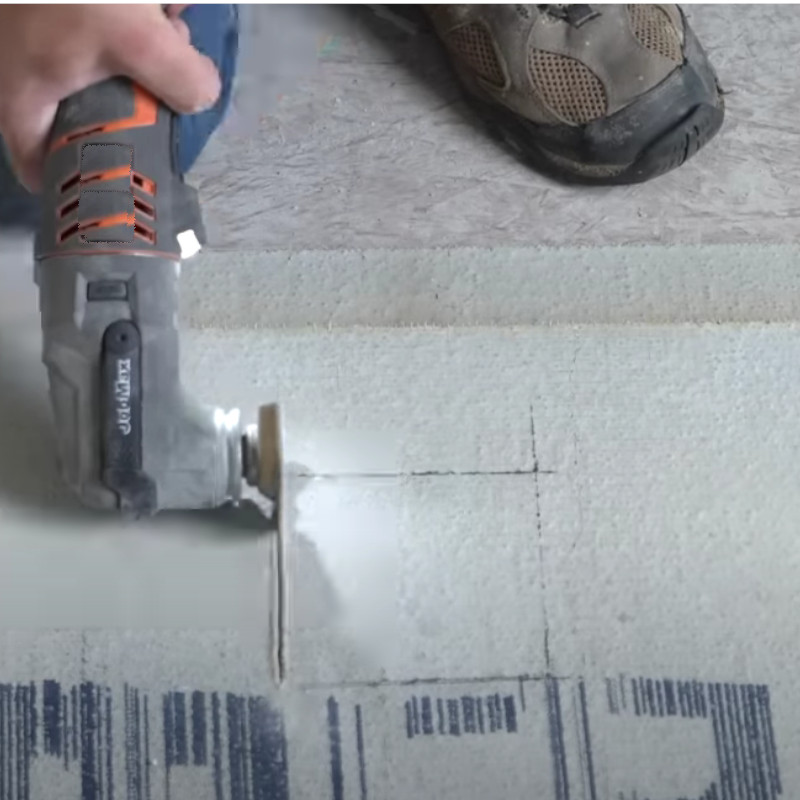
ROUND HOLES
You can cut openings for shower heads with a variety of circle-cutters.

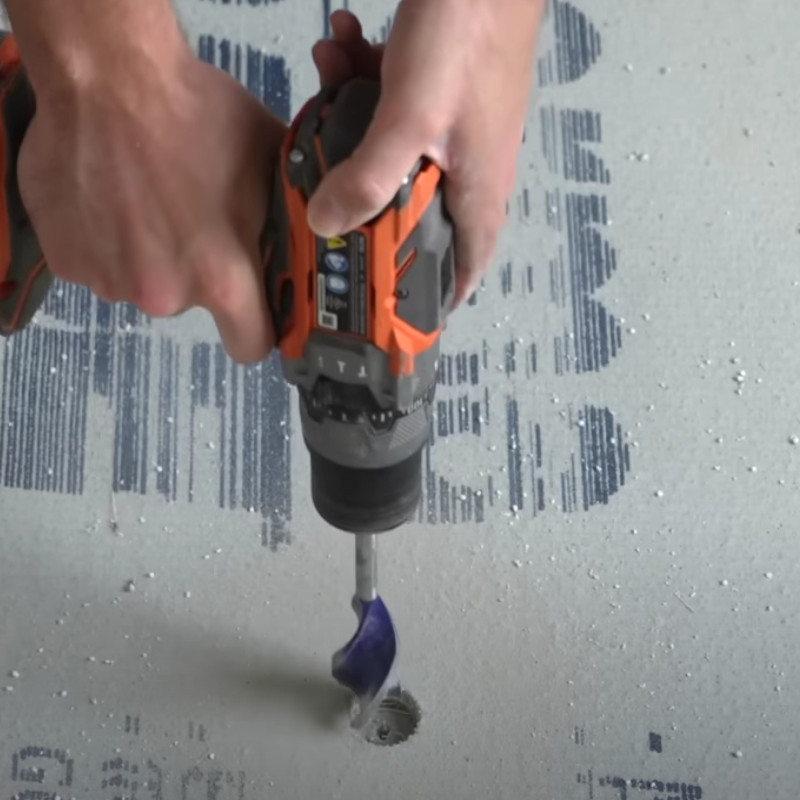
When cutting cement boards, they’re best operated at high speed. Remember, using a power saw will create a lot of dust, as compared to using a regular pad saw.
HOW TO CUT CEMENT BOARD WITHOUT DUST?
This is the common question or issue that comes up particularly if you are going to be installing tile over a subfloor or framed wall. This means your floor or your walls are wood.
One thing that is true about all types of cement board is that every time you try to cut them, they create tons of dust which goes everywhere. Why? This product is very porous and made from cement.
Goal overall is to make the least amount of dust possible. There are some ways to avoid dust. Some are easier than others and some produce more dust than others.Here's what the situation looks like

Picture credits:
1. youtube.com, The Excellent Laborer, ‘Cement Board Installation - Shower Walls For Tile - COMPLETE TUTORIAL’, mpeg, July 17, 2022, accessed January 9, 2023.
2. youtube.com, Nassrin's DIY, ‘How to Cut Cement Board’, mpeg, March 17, 2020, accessed January 11, 2023.
3. youtube.com, RENOS 4 PROS & JOES, ‘HOW TO CUT CEMENT BOARD WITHOUT DUST’, mpeg, March 10 2020, accessed January 11, 2023.
Related articles:
Cement bonded particle board features
Vapour control layer. Dark side
How to install insulated plasterboard
*All the information provided in the content published on Insulationgo blog is for informational and educational purposes only. Insulationgo LTD makes every effort to ensure the accuracy and timeliness of the content, but we do not assume any responsibility for any errors or omissions.
The information presented on this blog should not be considered as professional advice or a substitute for consulting relevant experts. Before making any purchase decisions or taking action based on the information presented here, it is strongly recommended to contact the product manufacturer directly to verify the details and ensure its suitability for your specific needs.
By using this blog, you acknowledge and agree that Insulationgo LTD shall not be held liable for any damages, losses, or inconveniences arising from the use or reliance on the information provided herein. This limitation of liability applies to all users of the blog, including but not limited to visitors, readers, and subscribers.










































































































